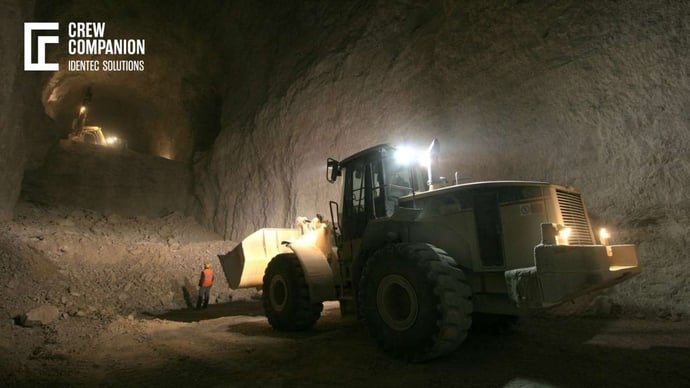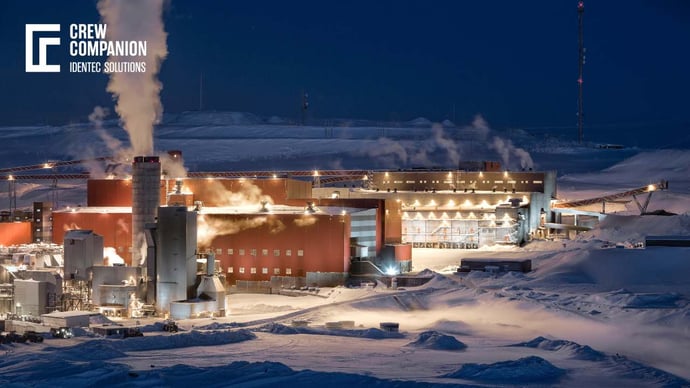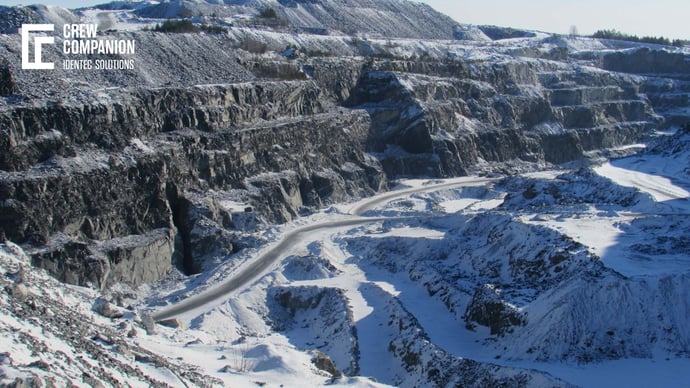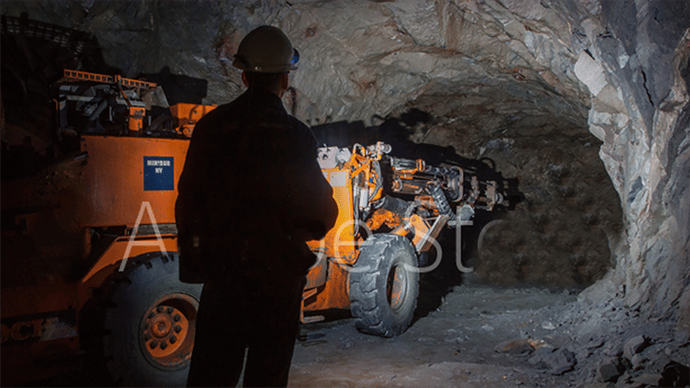Underground Mining Safety Equipment - Tracking: Advancements and Implementation
| Written by Michal Wozniakowski-Zehenter
Mining underground is a source of minerals and resources needed for our everyday life. It was never an easy task to excavate them and throughout centuries mine personnel were exposed. The underground world is pretty unforgiving, putting miners' safety on the line due to its tight and tough-as-nails conditions.
In this article, we will dive deep and explain in details the importance of tracking technologies. How to incorporate new solutions and how to maintain the safety of the workers and protect them against these risks. The goal is to create underground mining safety equipment at its best.
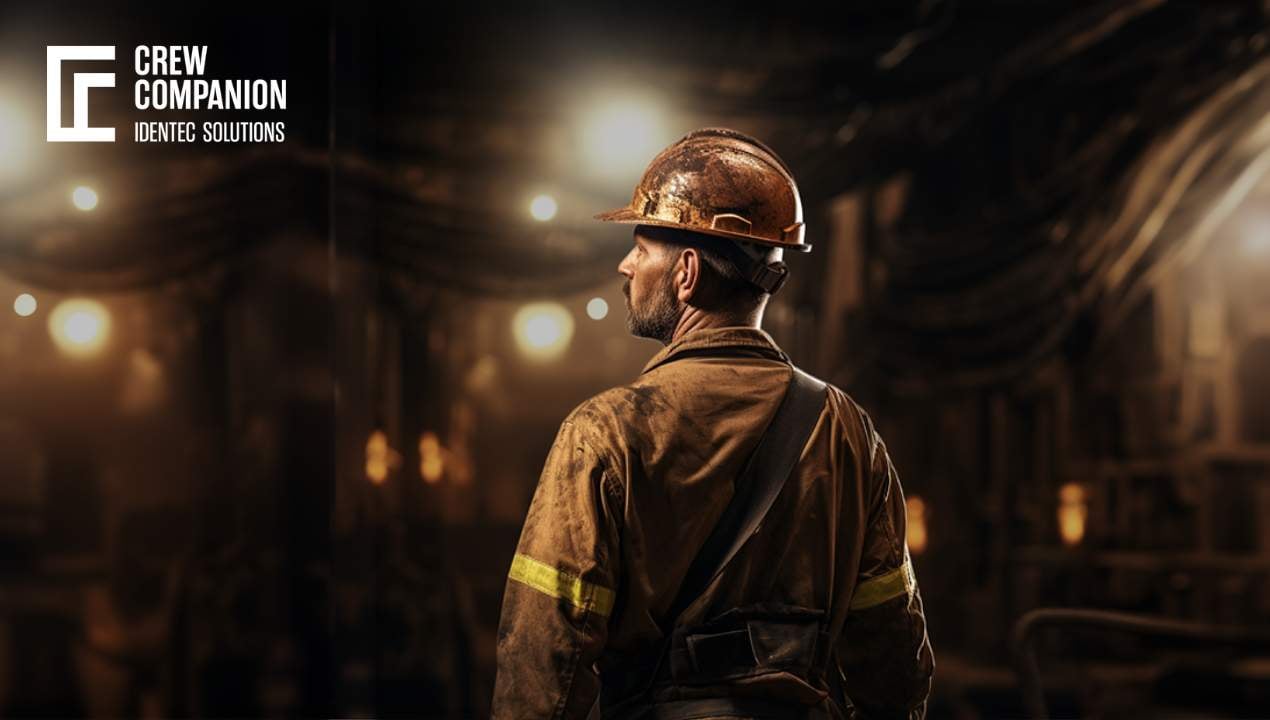
No video selected
Select a video type in the sidebar.
SWEET CHILD O’MINE
Yes, that was the Guns N’ Roses song, but coming back to our topic - tracking safety gear is now a key player in keeping miners secure and ramping up the efficiency of the whole operation. Those technologies keep a constant eye on the mine workers' location and conditions surrounding them, feeding back real-time data that could be a game-changer in emergency situations. Don’t compare it to Big Brother. We prefer to see it more as a Guardian Angel.
A sudden cave-in, a gas leak, or any other risk that could pose a threat to life underground is possible while performing duties in this harsh environment. Ultimate goal? To know exactly where miners are and be able to track their movements. It is essential for launching quick and targeted rescue missions. Did I already mention how important this technology is? No? It’s crucial and it could make the difference between life and death in situations where things go sideways, literally.
We are living in a time when technology is developing faster, and almost overnight, things are being upgraded. Does it apply also to underground mining safety equipment? Without a doubt. The exact location of the crew, early detection of potential hazards and swift response during emergencies are now possible, thanks to all the devices equipped with GPS, RFID or other tracking technologies. These systems can easily send data, communicate, and almost buddy up with other safety equipment, such as gas detectors, ventilation systems, and communication devices, creating a comprehensive infrastructure that lets miners perform their jobs with the assurance of being protected.
There is also the other side of the coin, and it’s as well a benefit for mining operations. Providing real-time location data will also optimize the workflow of mining operations and help with better allocation of resources. As a result, mine operators will increase productivity while reducing costs, which means only one thing – greater profit.
What are CHALLenges in Tracking Miners?
Working in underground mines was, is and will be dangerous. After all, geological structures, with their unpredictability and unstable ground conditions, surround workers every single day. The safety of the personnel is threatened by injuries from rockfalls and subsidence, as well as respiratory problems due to bad ventilation and insufficient airflow. To address these risks, advanced tracking technologies can be implemented to monitor gas concentrations and air quality. It gives the opportunity to carry out potential evacuation fast and to mitigate the risks due to early detection of hazards.
Another struggle is limited visibility, making it difficult to identify potential hazards and navigate safely. But then, multiple technologies come to play a role, showing the exact, real-time location of every person or safety gear, ensuring that miners can quickly find a rescue chamber or utilize necessary equipment, even in low-light conditions.
Since communication is the key, the complexity and enclosed nature of underground mine design often lead to challenges in this field. Traditional methods like radios may experience disruptions or dead zones in this environment. Coordinating rescue efforts and ensuring the safety of all personnel should always go smoothly; there are enough other problems to have non-working radios as another one. Tracking technologies need integration with reliable communication systems to ensure that the workers underground have constant contact with the control centre.
All of the underground mining safety equipment needs to be regularly checked and maintained. The harsh conditions mentioned above can influence the reliability and effectiveness of safety gear. Tracking technologies can help with scheduling checks, repairs or replacements of the devices based on actual usage of them and environmental conditions. Optimized performance with minimizing risks of equipment failures is crucial during critical moments. Read more about blasting safety!
The success of tracking technology is greatly dependent on the expertise and willingness of the mining staff. Proper mining safety training is crucial in ensuring that miners understand the importance of safety equipment and how to effectively utilize tracking technologies. Additionally, strict stick to safety protocols and rules as well as compliance with established procedures are crucial for the success of any safety system. Mining companies must invest in comprehensive training programs and foster a safety-oriented culture to maximize the benefits of tracking technologies (learn also about safety training kits).
Last, but not least, the integration of various technologies, not only tracking, into a unified and interconnected system presents its own set of challenges. Different solutions may operate on different communication protocols, requiring careful integration to create a seamless monitoring and management platform.
![]()
THE THREE PILLARS: TRACKING, SAFETY, AND PRODUCTIVITY
Welcome to the mine of the 21st century, a place where tracking technology now plays a role as vital as the hard hats on the miner's heads. The drill here is about two things: safety and productivity, and with the real-time data tracking technologies provided about both personnel and equipment, we're breaking new ground.
Let's take a closer look at the one technology leading this industrial revolution underground: Radio-Frequency Identification, or as we call it, RFID. Picture these tiny tags - made up of an antenna and a microchip - attached to your wrist or hanging from a lanyard, or stuck onto important equipment like gas detectors and safety vests. These little guys constantly communicate with the RFID readers scattered strategically throughout the mine, sending valuable info back to the control centre in real-time.
Now, imagine how RFID transforms underground operations. It's like having a virtual map showing each crew member's location, even during a fire or a cave-in. On top of that, it's a constant check on the safety gear, making sure it's where it should be when needed. This just scratches the surface of how RFID enhances efficiency and safety underground.
But RFID does more than just track - it enforces. It's a gentle reminder to miners to always carry the necessary safety equipment. If anyone forgets to comply, it's there to gently nudge them back in line. It even lends a hand in finding lost or misplaced equipment, thus reducing downtime and ensuring everything runs like clockwork.
Next up, we have the well-known GPS tech, another game-changer in mining safety. It works round the clock, tracking vehicles and machinery within the mine, helping to use these resources optimally and cut back on idle time. With the help of GPS data, operators can plan the best routes for mining vehicles, saving time and reducing fuel consumption.
We can't forget to mention the Internet of Things (IoT) and wireless sensor technology, either, the new sheriffs in town. These tech sentinels constantly monitor air quality, temperature, humidity, and gas concentrations. They also serve as early warning systems, sending alerts at the first signs of danger, keeping the miners and management one step ahead of any risks.
And it's not just about machinery and environmental monitoring anymore. With advancements in wearable tech, safety measures are now literally at miners' fingertips. These wearables monitor vital signs, helping catch fatigue, stress, or health issues early. In case of an accident, they send critical data to the control centre, enabling quick and efficient emergency responses.
Still, it's not all a bed of roses. For tracking technologies to work their magic, a robust communication infrastructure is a must. Plus, in the depth of mines where power sources can be scarce, keeping these devices powered up is another challenge. But hey, what's a bit of a challenge to an industry that has constantly evolved and risen above the odds, right?
Which Advanced Technologies Integrate in Underground Mining Safety Equipment?
Besides tracking systems, underground mining safety equipment has evolved into a whole spectrum of protective technologies to ensure reduced risks and advanced levels of operational safety. One such promising development is the application of autonomous drones equipped with high-resolution cameras and thermal imaging sensors. These drones can be deployed to inspect mine shafts and tunnels, providing real-time data and high-definition imagery to establish structural weaknesses, heat sources, or other hazards. In this way, drones for such inspections make the job much safer for human surveyors, who no longer have to personally enter dangerous areas.
Apart from that, next-generation exoskeleton suits are being developed to assist miners in bearing heavy loads, reducing body stress and preventing injuries. Equipped with sensors, such suits can also read the motion and condition of the wearer to produce data to be used in attempts to avoid overexertion or fatigue-related accidents. This piece of innovative equipment, combined with state-of-the-art tracking systems, creates a complete safety network that promotes worker protection while increasing the efficiency of a mine. For workers with shifts lasting up to 12 hours, exoskeletons provide both ergonomic support and the ability to handle additional loads of up to 90 kg. These wearable devices help minimize the risk of back injuries and fatigue by supporting the upper body and limbs during heavy lifting and repetitive tasks, ensuring safer and more efficient movements. (3)
Further, real-time gas monitoring systems—IoT-enabled sensors that track air quality continuously to provide workers with alerts in case of hazardous gases—are increasingly vital. Integrating these technologies into mining operations will guarantee the optimization of safety and efficiency, moving the industry toward a sustainable future while protecting its people.
FAQ
What is considered underground mining safety equipment?
When we talk about safety equipment in the realm of underground mining, we're essentially looking at those trusty companions that keep our miners safe amidst the rocks and the darkness. First up, we have the good old Personal Protective Equipment (PPE) – the hard hats, safety glasses, earplugs, gloves, and steel-toed boots. These are like a miner's second skin, shielding them from potential hazards. Then, there's the self-contained self-rescue (SCSR) device – a miner's best friend in times of emergency. We also can't overlook the gas detection devices. These little gadgets are like the miners' sixth sense, alerting them about harmful gases or a potential lack of oxygen.
Don't forget about those heavy-duty cap lamps either. Oh, and of course, we've got communication devices. From two-way radios to state-of-the-art RFID tracking systems, these ensure every miner's location is known, and help can be dispatched immediately if needed. We have rock dusting equipment, ventilation systems, and refuge chambers to round it off.
TAKEAWAY
Signing off, it's crystal clear that tracking tech has become the rock upon which modern mining operations stand. From the humble RFID to GPS, the IoT, and state-of-the-art wearables, they've shown us what they can do: real-time tracking, ramped-up safety compliance, and a vigilant eye on the environment, to name a few.
Yet, let's not kid ourselves. Their potential comes with its own set of hurdles. The need for robust communication infrastructure, the puzzle of data integration and analysis, and the constant demand for power supply – these are the beasts to tame for harnessing the full power of tracking technologies.
But knowing the mining industry's grit, we won't let these challenges get the better of us. We'll keep digging deeper, exploring more, and evolving constantly to ensure that our brave miners are safe and our equipment is managed efficiently. Because in mining, the only direction we know is forward. So here's to a safer, more productive future, underground. Keep drilling!
Dive deeper into one of our core topics: Mining Safety
Glossary
The Internet of Things (IoT) is a network of physical devices, vehicles, appliances, and other objects equipped with sensors, software, and connectivity, enabling them to collect and share data.
These IoT devices, often referred to as "smart objects," range from simple smart home gadgets like thermostats to wearable technology such as smartwatches and RFID-enabled clothing, as well as complex industrial equipment and transportation systems. The concept extends to entire "smart cities" powered by IoT technologies. IoT allows these smart devices to communicate with one another and with other internet-enabled systems, such as smartphones and gateways, creating a vast interconnected network capable of exchanging data and performing tasks autonomously. (4)
Sources:
(1) https://www.mining-technology.com/buyers-guide/health-safety-protective-equipment/
(2) https://au.rs-online.com/web/content/discovery/ideas-and-advice/complete-guide-on-essential-mining-ppe-for-health-and-safety
(3) https://www.mining-technology.com/features/mining-wearables-prioritise-protection/
(4) https://www.ibm.com/think/topics/internet-of-things
Note: This article was updated on the 15th of January 2025

Author
Michal Wozniakowski-Zehenter, Marketing Manager
Michal Wozniakowski-Zehenter is an experienced marketing and project management professional. He spent most of his career on projects with a strong focus on digital marketing and event management. He is a very active voice representing offshore and mining industries through social media channels. Michal writes mainly about offshore oil and gas, renewable energy, mining and tunnelling. Compiling and sharing the knowledge within industries is one of his goals.

